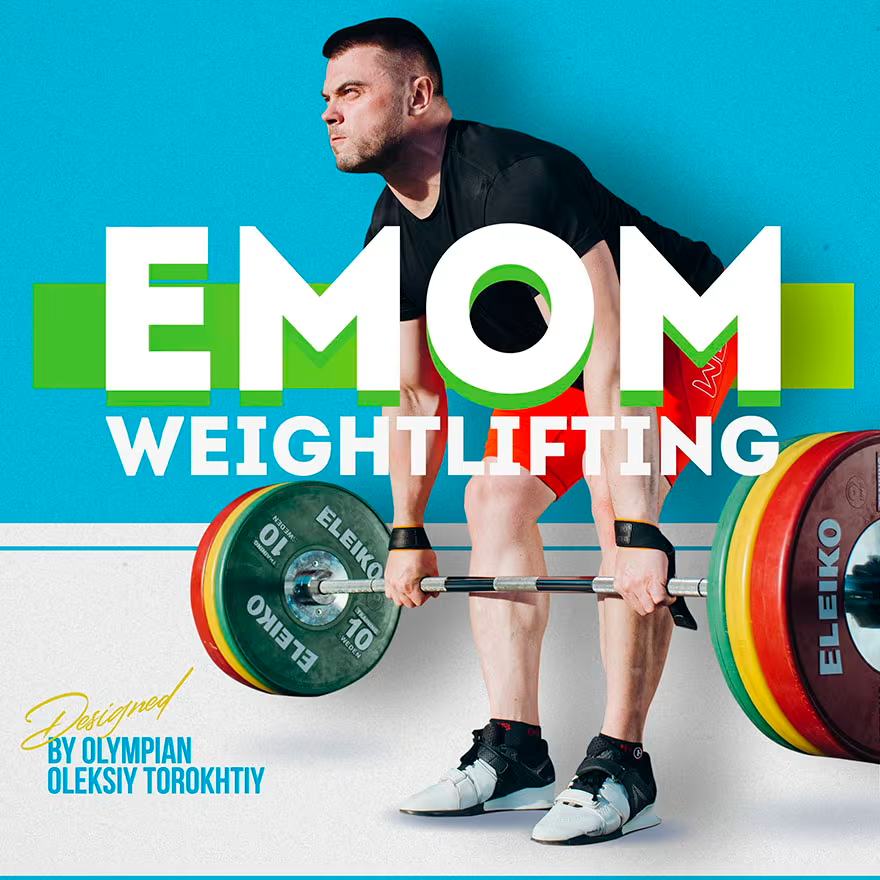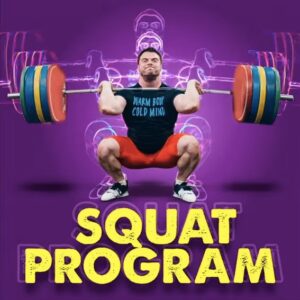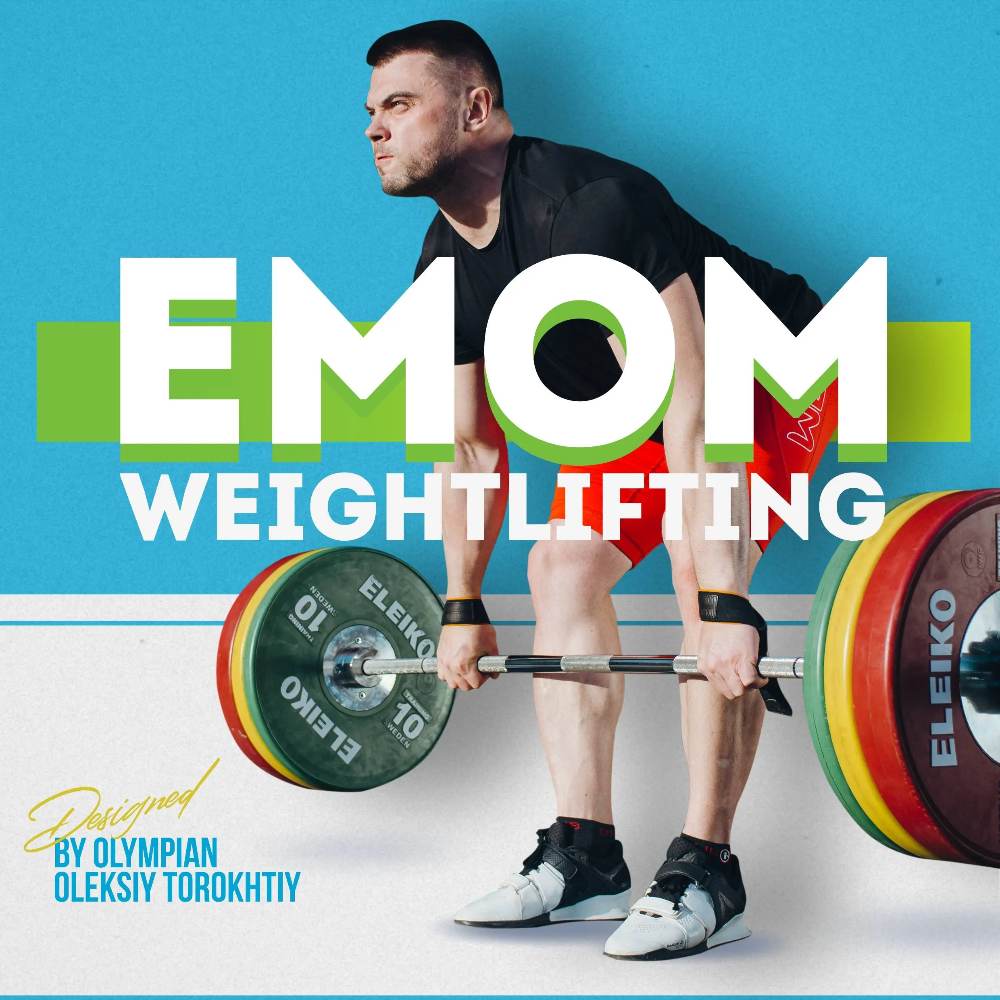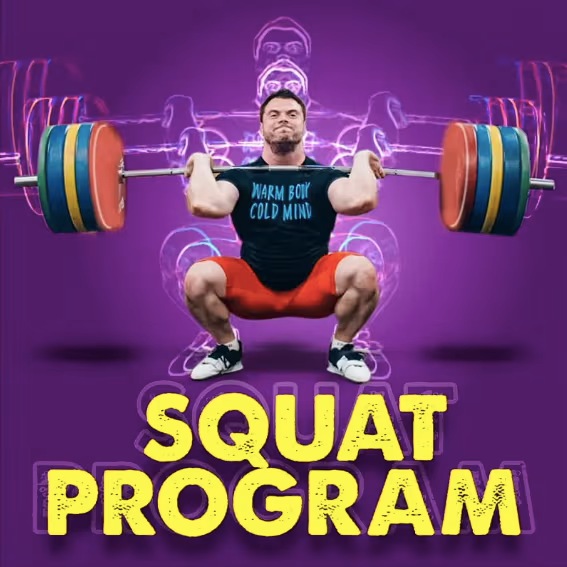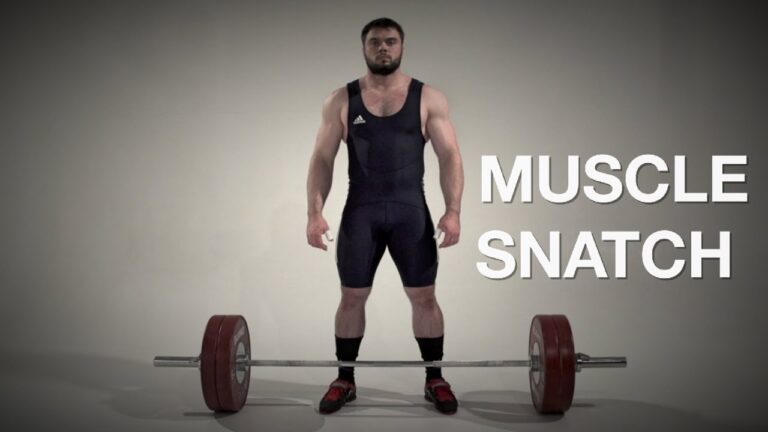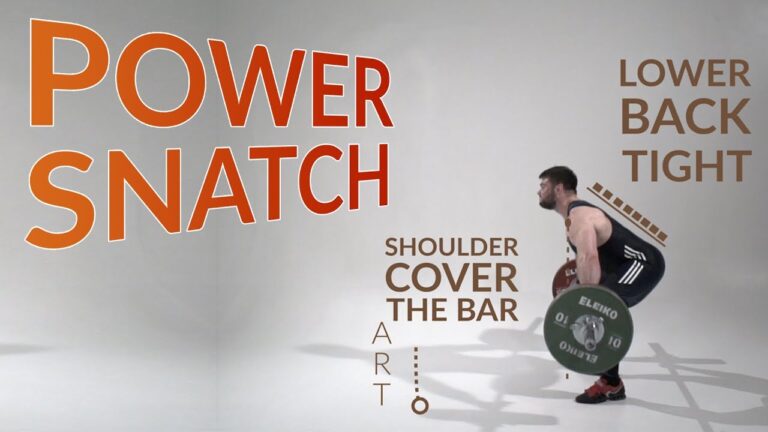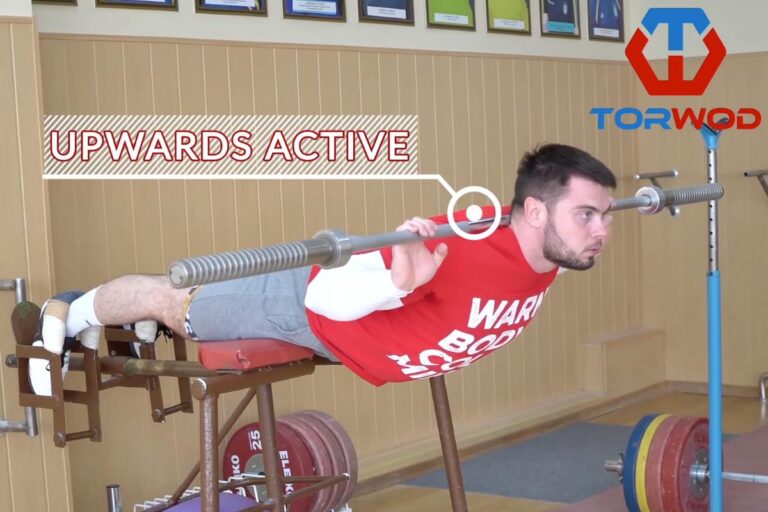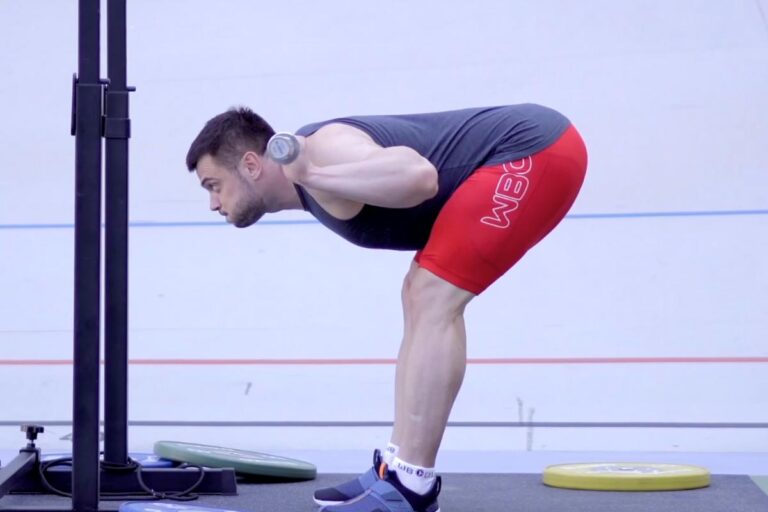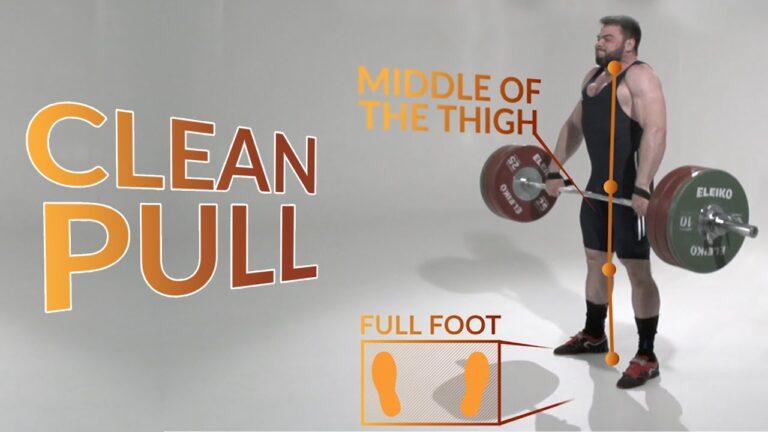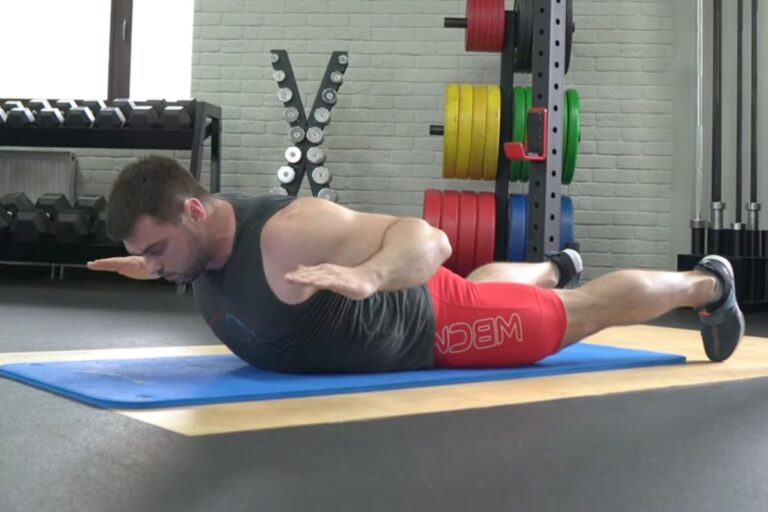Snatch Push Press
What Is Snatch Push Press?
The snatch push press is a weightlifting exercise that combines elements of the snatch and push press. It is a variation of the traditional push press, which is a compound exercise that involves using the legs to drive a barbell overhead, while the arms and upper body provide additional power to complete the movement.
The snatch push press is a weightlifting exercise that primarily targets the muscles of the upper body, especially the shoulders and triceps. Specifically, the muscles that are primarily involved in the snatch push press include:
Deltoids: The deltoid muscles are the main muscles that are targeted during the snatch push press. They consist of three parts: the anterior deltoid, medial deltoid, and posterior deltoid, and all three parts are heavily involved in this snatch and press exercise.
Triceps: The triceps muscles are located on the back of the upper arm and are responsible for extending the elbow. They are also heavily involved in the snatch pressing, especially during the lockout phase of the lift.
🔻Find Your Best Training: Take Our Quiz!
Are you ready to learn and grow? Take our simple quiz to discover the right training program for you. Let us help you succeed — click below to start the quiz!
Upper Trapezius: The upper trapezius is a muscle located on the upper back and neck. It is responsible for elevating and rotating the shoulder blades, which is an important movement during the snatch push press.
Core Muscles: The snatch push press also involves the use of the core muscles, including the abdominals and lower back muscles, to stabilize the body during the lift.
Leg Muscles: Although the primary focus of the snatch push press is on the upper body, the exercise also requires the use of the leg muscles, including the quads and glutes, to generate power and drive the weight upwards.
How To Perform Snatch Grip Push Press?
To perform the snatch push press, the lifter starts with the barbell at shoulder height. The lifter then dips down slightly by bending the knees and pushing the hips back, before driving the barbell up overhead in a push press motion. As the barbell reaches the top of the movement, the lifter will typically receive the barbell overhead in the snatch catch position, with the arms fully extended and the hips and knees slightly bent. The lifter will then stand up to complete the lift.
The snatch push press can be used as a way to improve explosive power and coordination in the snatch, as well as to build overall upper body strength and power. It can also be used as a warm-up exercise for the snatch, or as a way to add variety to training programs.
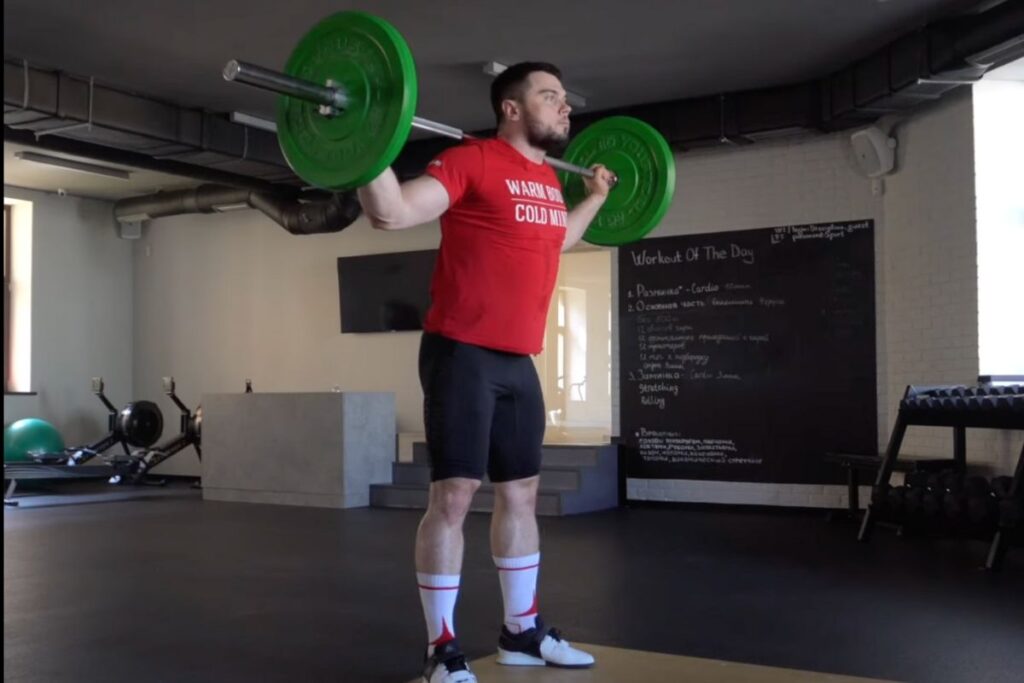
Snatch Push Press Pros & Cons
The snatch push press, like any exercise, has both pros and cons. Here are a few of each:
1. Pros:
Power development: The snatch push press is a great exercise for developing power and explosiveness, as it requires the lifter to use their legs and upper body to generate a lot of force and move the barbell quickly.
Coordination: Because the snatch push press combines elements of the snatch and push press, it can help lifters improve their coordination and timing in both of those lifts.
Overhead strength: The snatch push press can be a useful exercise for building strength in the muscles of the shoulders, upper back, and arms, which are important for overhead lifting.
2. Cons:
Technical difficulty: The snatch push press can be a difficult lift to master, as it requires good technique and timing to perform correctly.
Risk of injury: As with any overhead lifting exercise, there is a risk of injury to the shoulders and upper back if proper form is not maintained.
Limited specificity: While the snatch push press can help improve explosiveness and coordination in the snatch, it may not be as specific to the snatch as other exercises, such as the snatch balance or snatch pull.
Overall, the snatch push press can be a valuable exercise for weightlifters and other athletes, but it should be performed with caution and under the guidance of a qualified coach.
Main Mistakes In Snatch Push Press Execution
The snatch push press is a complex weightlifting exercise that requires proper technique and form to perform safely and effectively. Here are some common mistakes to avoid when performing the snatch push press:
1. Improper grip
The snatch push press requires a specific snatch grip that is wider than a regular overhead press grip. Using an incorrect grip can lead to inefficient technique, reduced power output, and increased risk of injury.
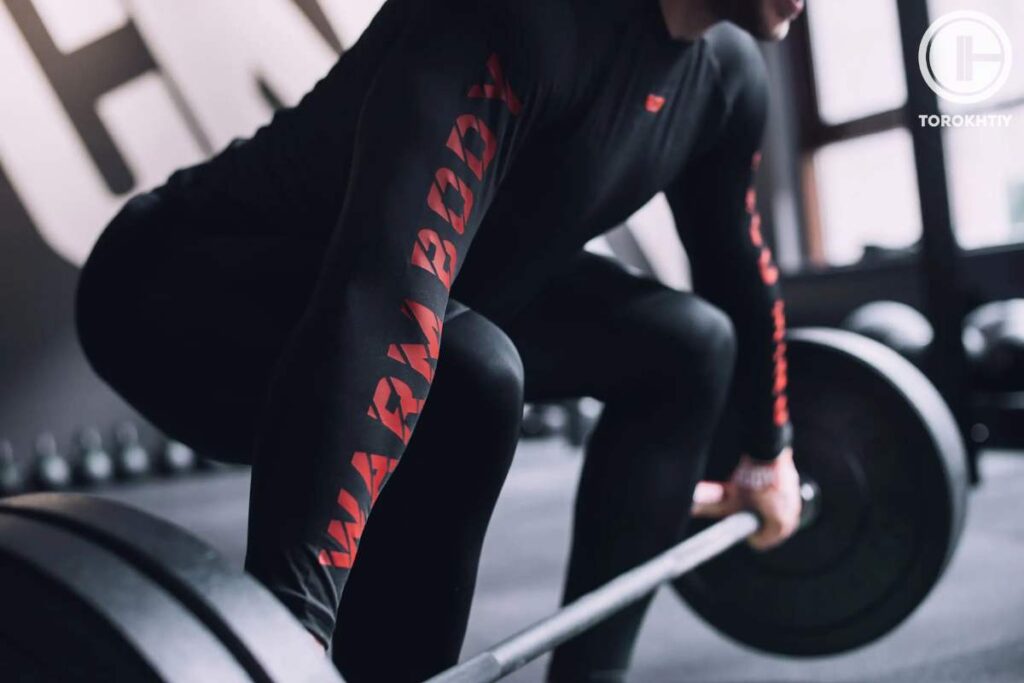
2. Poor rack position
During the initial phase of the snatch push press, the barbell needs to be properly racked on the shoulders. Failing to rack the bar properly can result in an unstable position and reduce the transfer of power to the bar.
3. Incorrect Timing
Timing is critical in the snatch push press, and failing to time the movements correctly can lead to a loss of power or even a missed lift.
4. Incomplete Lockout
Failing to fully lock out the arms at the top of the lift can lead to reduced power output and increase the risk of injury.
5. Poor Footwork
Proper footwork is essential in the snatch push press, as it helps to generate power and maintain stability. Failing to keep the feet in the correct position can lead to a loss of balance and reduced power output.
6. Lack of Mobility
The snatch push press requires good mobility in the shoulders, hips, and ankles. Failing to address mobility limitations can lead to inefficient technique and increased risk of injury.
It is essential to work with a qualified coach or trainer to learn proper technique and avoid these and other potential mistakes when performing the snatch push press.
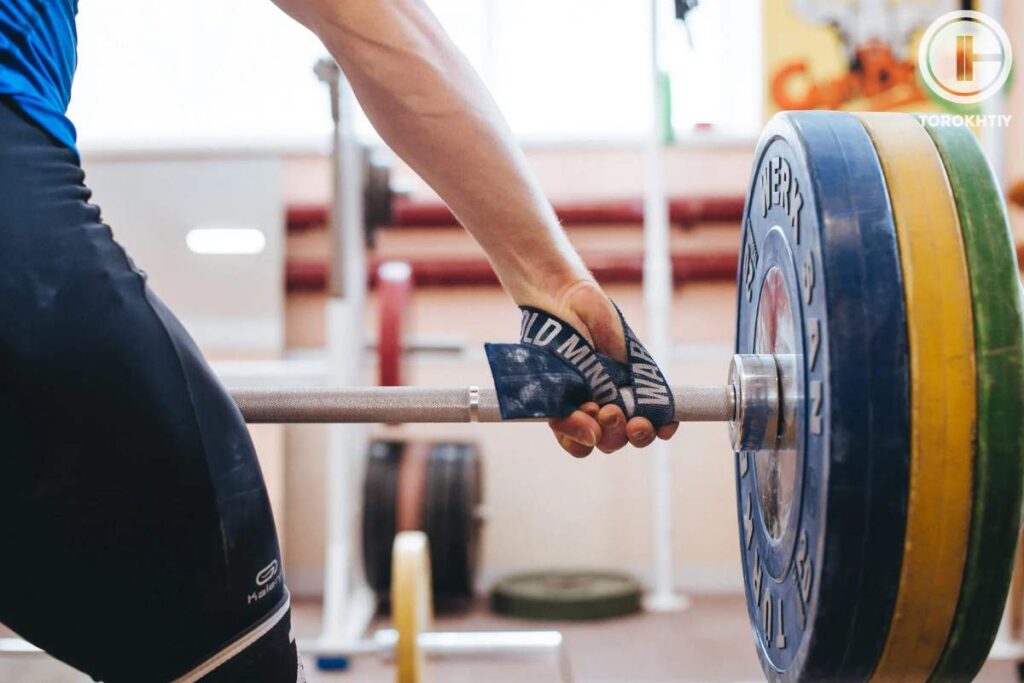
Snatch Push Press Variations
Sometimes athletes don’t have a barbell or just want to perform some variation of exercise they use to do all the time, just to get away from the common routine. Here are some variations of the snatch push press that you can incorporate into your training:
1. Dumbbell Or Kettlebell Push Press
This variation of the push press is performed with dumbbells or kettlebells instead of a barbell. This variation can help to develop more stability and control in the shoulders and arms.
2. Single Arm Dumbbell Or Kettlebell Push Press
The single arm push press is a unilateral exercise that is performed with one arm at a time. This variation can help to improve stability and balance on each side of the body.
3. Overhead Squat To Snatch Push Press
The overhead squat to snatch push press also known as a snatch thruster is a complex exercise that combines the overhead squat and snatch push press movements. This variation can help to improve mobility, stability, and overall technique in the snatch movement.
It is important to master the basic snatch push press movement before attempting these variations, and to work with a qualified coach or trainer to ensure proper technique and form.
Snatch Push Press
Tips To Master Snatch Push Press
Mastering the snatch push press can take time and practice, but with proper technique, consistency, and patience, you can improve your performance and make progress. Here are some tips to help you master the snatch push press:
1. Start With Light Weight
When learning the snatch push press, it is important to start with a light weight and focus on proper technique and form. Gradually increase the weight as your technique improves and you feel more comfortable with the movement.
2. Focus On Technique
Proper technique is critical in the snatch push press. Focus on, using the legs to generate power, and locking out the arms at the top of the lift.
3. Develop Mobility And Flexibility
The snatch push press requires good mobility and flexibility in the shoulders, hips, and ankles. Incorporating mobility exercises and stretches into your training routine can help to improve your technique and reduce the risk of injury.
4. Improve Your Strength
The snatch push press requires a combination of upper body and lower body strength. Incorporating strength training exercises, such as squats, deadlifts, and presses, into your training routine can help to improve your overall strength and power output.

5. Practice Regularly
Consistency is key when mastering the snatch push press. Practice the movement regularly (1-2 times per week), and focus on improving your technique and form over time.
6. Video Analysis
Recording your snatch push press and reviewing it with a coach can help you to identify areas for improvement and make adjustments to your technique and form.
Remember, mastering the snatch push press takes time, patience, and consistent practice.
Why Trust Us?
With over 20 years in Olympic Weightlifting, our team does its best to provide the audience with ultimate support and meet the needs and requirements of advanced athletes and professional lifters, as well as people who strive to open new opportunities and develop their physical capabilities with us.
By trusting the recommendations of our certified experts in coaching, nutrition, dietology, and sports training programming, as well as scientific consultants, and physiotherapists, we provide you with thorough, well-considered, and scientifically proven content. All the information given in the articles concerning workout programming, separate exercises, and athletic performance, in general, is based on verified data. We ensure that you can rely on our professionals’ pieces of advice and recommendations that can be treated as personalized ones which will benefit you and fully meet your needs.
The product testing process is described in more detail here
Author: Oleksiy Torokhtiy
Olympic Weightlifting Champion
Best Results: Snatch – 200 kg,
C&J – 240 kg
Oleksiy Torokhtiy is a professional athlete boasting 20 years of experience in Olympic weightlifting. With multiple European and World titles under his belt, he has showcased his prowess in two Olympic Games (Beijing 2008 and London 2012). Upon concluding his illustrious career, Oleksiy dedicated himself to coaching. By 2022, he had conducted over 200 weightlifting seminars worldwide. He is the visionary behind an international sportswear and accessories brand known for its motto, “Warm Body Cold Mind.” Additionally, he is an esteemed author and the creator of a series of training programs and eBooks.


